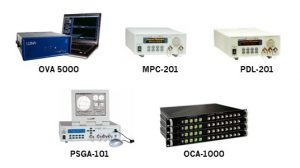Techniques for Measuring the PDL of Optical Systems or Components
 As a result of rapidly accelerating demand for higher bandwidths, data center connections are migrating from 25G/100G to 400G/800G transmission speeds. Coherent receivers are expected to be able to mitigate the effects of PDL because it limits the bandwidth capacity of high-speed communication systems. Unlike other impairments that can be compensated for, such as polarization mode dispersion (PMD), PDL causes pulse distortion that cannot be compensated for.
As a result of rapidly accelerating demand for higher bandwidths, data center connections are migrating from 25G/100G to 400G/800G transmission speeds. Coherent receivers are expected to be able to mitigate the effects of PDL because it limits the bandwidth capacity of high-speed communication systems. Unlike other impairments that can be compensated for, such as polarization mode dispersion (PMD), PDL causes pulse distortion that cannot be compensated for.
To ensure network quality of service, the PDL of each component should be minimized, and the maximum cumulative PDL of the network must be maintained below a designated limit. For example, standardization work was done by the OIF 400ZR IA and IEEE P802.3ct Task Forces (400GBASE-ZR) to specify the maximum polarization dependent loss in the link to be 2 dB, excluding transmitter polarization imbalance. Therefore, accurate PDL measurements are required for almost all optical components, sub-modules and modules as part of the specified standard parameters.
There are three standard techniques commonly used to measure the PDL of optical systems or components: 1) Polarization scrambling/scanning, 2) Maximum/minimum search, and 3) Matrix measurements using Mueller or Jones matrices. Each method has its own advantages and disadvantages in terms of measurement speed, accuracy, optical bandwidth and calibration requirements.
The method that should be selected depends on the requirements of the application. Our new Application Note provides a comparison of the three methods and the recommended applications.